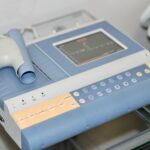The world of medical equipment and the insurance billing landscape could overwhelm even the most experienced professionals. The complexity of the tasks, from maintaining DME credentialing to managing insurance contracting, calls for advanced expertise in revenue cycle management.
Among the various components that impact this management system, accurate medical coding — and, in particular, ICD-10 coding — can make a difference in the financial success of medical equipment suppliers.
The ICD-10 or International Classification of Diseases, Tenth Revision, is a coding system that standardizes the classification of diseases and other health conditions. The system isn’t new; it has been in effect since October 2015. Nevertheless, its significance in today’s healthcare continues to increase as it plays a role in everything from patient care to reimbursement claims.
As a medical equipment supplier, understanding ICD-10 coding is crucial to your business operations. The coding system helps you communicate accurate information about patients’ diseases and medical equipment requirements to insurance companies. Inaccuracies or miscommunication can cause potential claim denials leading to revenue loss. Thus, a deep understanding and correct implementation of ICD-10 coding is key to enhancing your revenue cycle management.
This blog will explore the link between ICD-10 coding and revenue cycle management for medical equipment suppliers. We aim to provide relevant, intelligent, and solution-oriented content that not only assists you in understanding the crucial role of ICD-10 codes but also helps you implement them effectively in your business operations. We’ll delve into how to avoid common coding errors, improve billing accuracy, and ultimately optimize your revenue cycle.
Stay tuned for expert insights and actionable strategies that are designed to enhance your revenue cycle management. In navigating the complex world of billing insurance, let’s take this journey together and give your medical equipment supply business the boost it needs to excel in today’s competitive healthcare market.
The Purpose of Insurance Audits
Insurance audits are designed to ensure the accuracy and legitimacy of claims submitted by medical equipment suppliers, promoting transparency and compliance throughout the industry. Some of the primary objectives of insurance audits include:
1. Verifying DME (Durable Medical Equipment) credentialing: Insurance companies want to ensure that medical equipment suppliers have the necessary accreditations, demonstrating their commitment to delivering high-quality products and services.
2. Confirming accurate medical coding: By examining documentation and medical billing records, auditors can assess the accuracy of the medical coding practices employed by your business, minimizing the risk of claim denial or reimbursement delays.
3. Evaluating adherence to insurance policies: Insurance audits aim to uncover any potential discrepancies or violations of insurance contracts, helping to maintain industry-wide compliance and protect patients’ interests.
Preparing for an Insurance Audit
To successfully navigate an insurance audit, preparation is key. By investing upfront in thorough documentation and a solid understanding of industry best practices, you can minimize the disruption to your business operations and mitigate the risk of any negative audit outcomes. Here are some essential steps to effectively prepare for an insurance audit:
1. Develop a robust internal compliance program: Implement a comprehensive and up-to-date compliance program that covers all relevant aspects of your business, including DME credentialing, medical coding, and insurance contracting. This will not only demonstrate your commitment to compliance but also serve as a valuable resource during the audit process.
2. Maintain accurate and organized documentation: Ensure that you have detailed records of all transactions, submitted claims, and other pertinent information readily accessible. This will facilitate a smoother audit process and enable you to address any potential issues promptly and efficiently.
3. Conduct internal audits regularly: By proactively evaluating your business’s compliance with industry best practices, you can identify any potential weaknesses and take corrective action before an insurance audit occurs.
Navigating the Audit Process
Once the insurance audit has begun, it’s essential to remain proactive, cooperative, and responsive throughout the process. Here are some strategies for successfully navigating an insurance audit:
1. Designate a primary point of contact: Assign a knowledgeable staff member to manage all communication with the auditors, ensuring a smooth flow of information and minimizing potential confusion or misunderstandings.
2. Address discrepancies promptly: If the audit uncovers any discrepancies or areas of concern, be prepared to provide a timely explanation and take corrective action as necessary. This demonstrates your commitment to compliance and can help mitigate any negative audit outcomes.
3. Learn from the audit results: Use the feedback and findings from the audit to identify areas for improvement and enhance your internal compliance program. This will not only help mitigate future audit risks but also contribute to more efficient and effective business operations overall.
Post-Audit: Addressing and Preventing Future Issues
After successfully navigating an insurance audit, it’s crucial to take the necessary steps to address any identified issues and prevent future compliance concerns. Consider implementing the following strategies to minimize the risk of negative audit outcomes in the future:
1. Revise and update your internal compliance program: Based on the findings of the insurance audit, take the time to update your compliance program, focusing on any areas identified as needing improvement.
2. Invest in staff training: Provide training and educational resources to your staff to ensure they remain up-to-date on industry best practices, including DME credentialing, medical coding, and insurance contracting. This investment will help to minimize future compliance risks and reinforce a culture of compliance throughout your organization.
3. Foster a culture of accountability: Encourage open communication and accountability among your staff, ensuring that any potential compliance concerns are promptly identified, reported, and addressed.
Embracing the Importance of Insurance Audits
While insurance audits can be challenging and time-consuming, they play a vital role in ensuring the accuracy and legitimacy of claims submitted by medical equipment suppliers, promoting industry-wide compliance, and protecting patients’ interests. By maintaining a robust internal compliance program, preparing for the audit, and learning from the audit process, you can successfully navigate insurance audits and safeguard your business’s reputation and financial stability.
Invest in the resources and training necessary to ensure your medical equipment supply business remains compliant with industry best practices. With dedication, effort, and a proactive approach, you can successfully navigate insurance audits, optimize your revenue cycle management and achieve sustainable growth in the competitive healthcare landscape.
For more revenue cycle management solutions, don’t hesitate to reach out to us at Wonder Worth Solutions. Our team of experts brings together advanced technology, robust business systems, and insightful business knowledge to provide a complete revenue cycle management solution. Contact us today to learn more!



